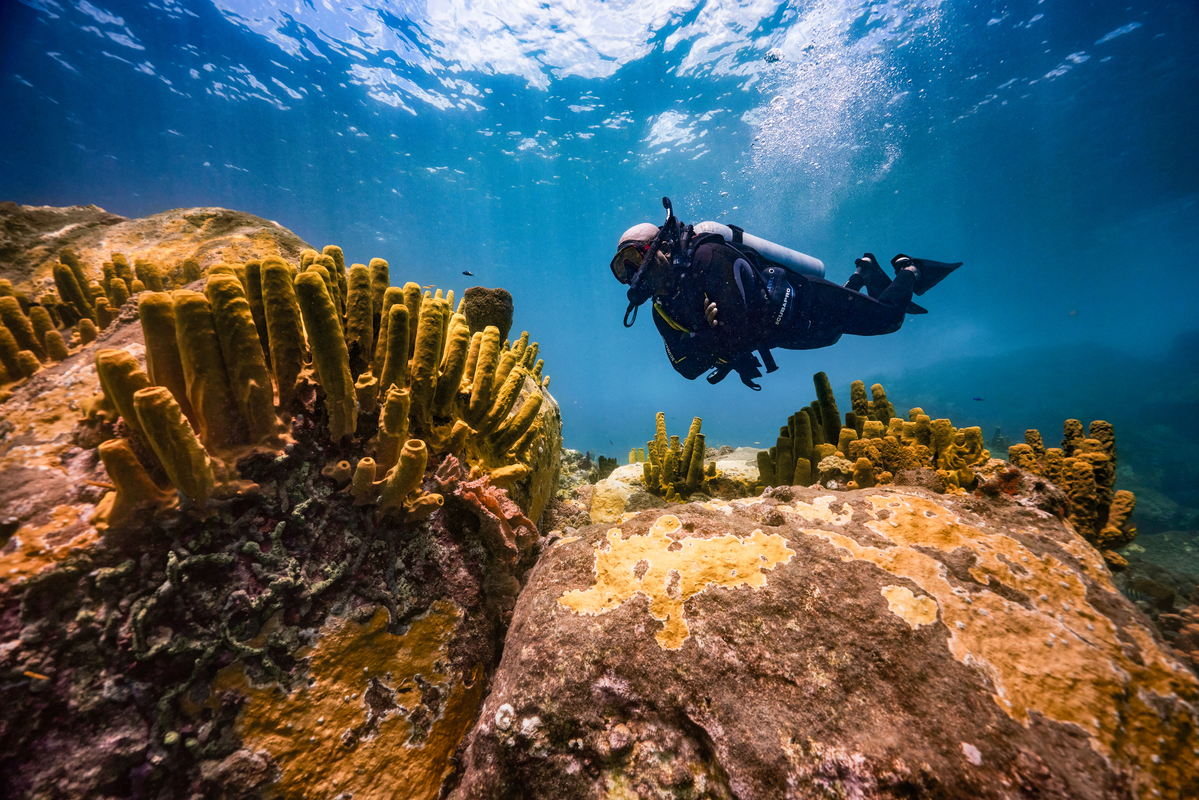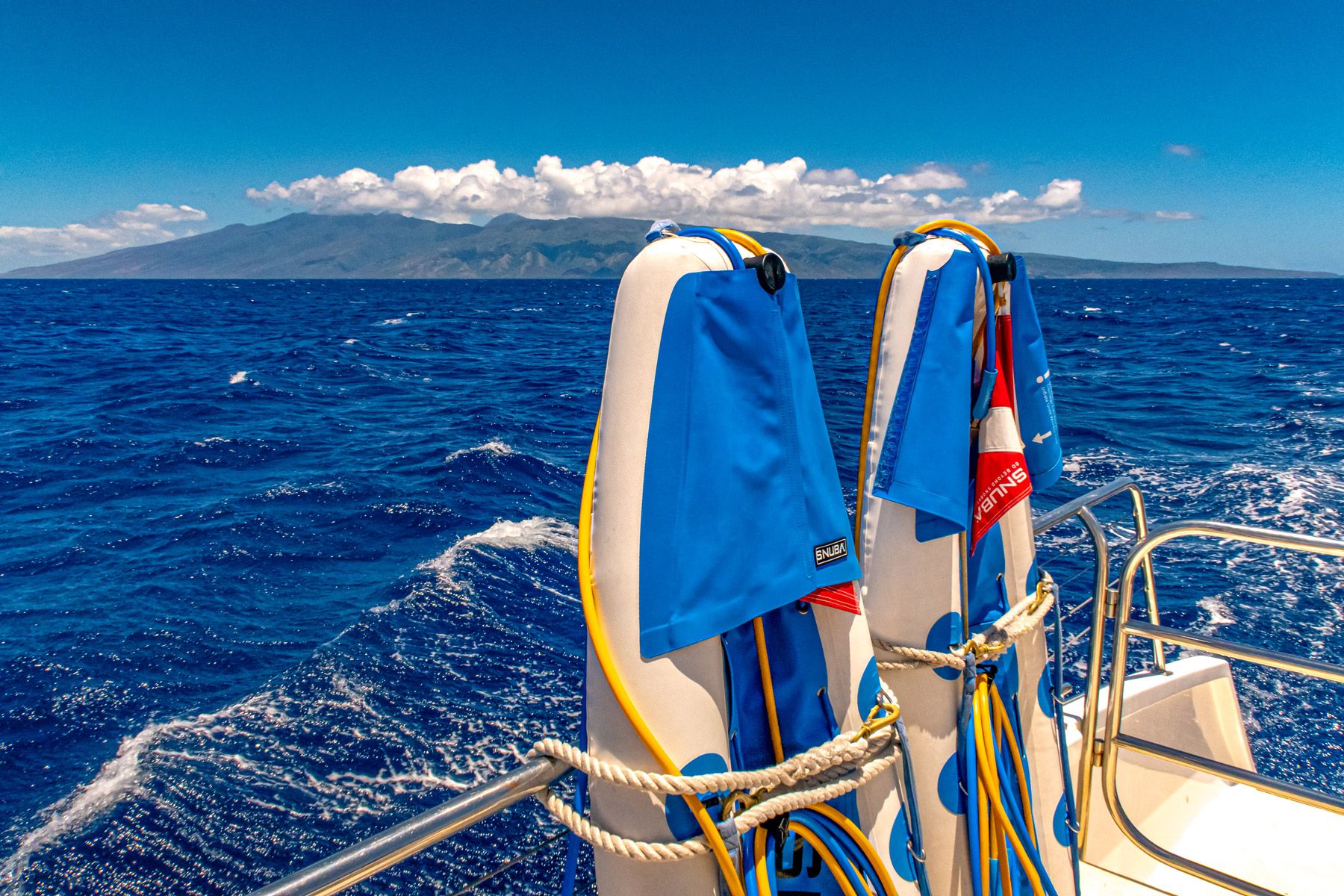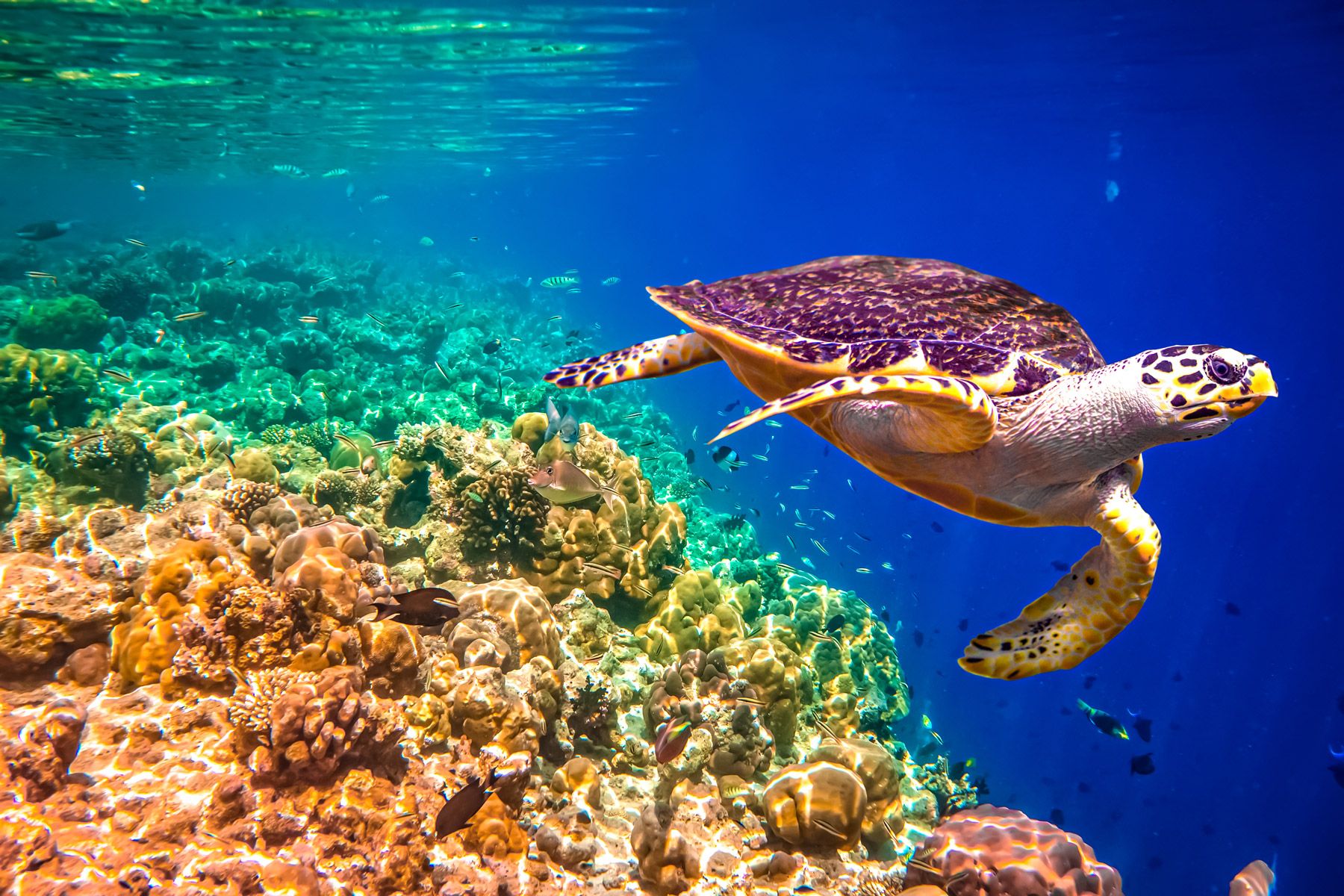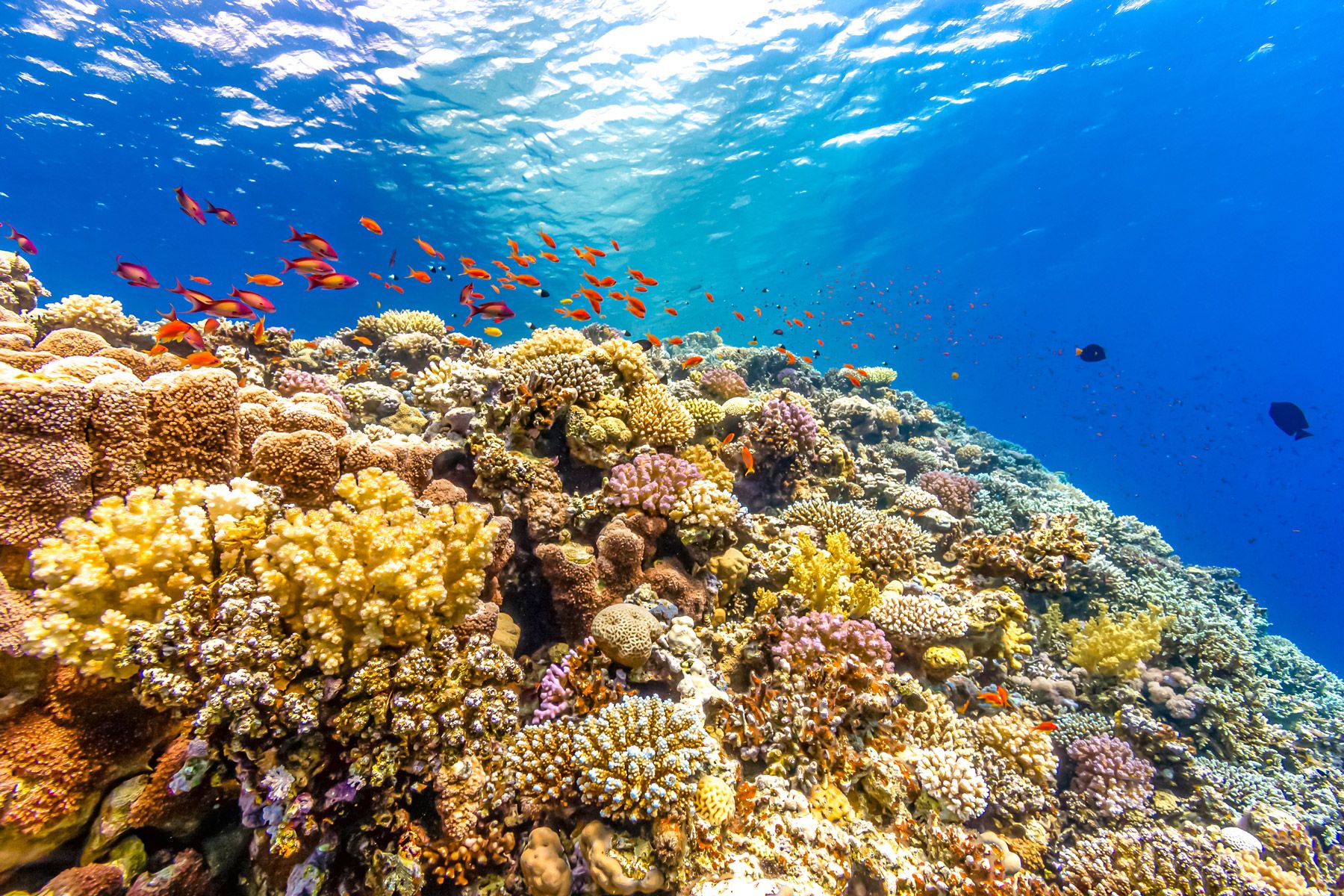SNUBA®, a genius combination between scuba diving and snorkelling that makes it possible to enjoy the best of the undersea world. Two words to describe it? Pure magic. That is precisely what you’ll find once you decide to set out on a SNUBA® expedition.
Sandals resorts that offer SNUBA® diving: Sandals Royal Bahamian (the Bahamas), Sandals Negril, Sandals Ochi (Jamaica), Sandals Regency la Toc, Sandals Grande St. Lucian and Sandals Halcyon Beach (Saint Lucia).
From Hawaii, to the Florida Keys, all the way to the Bahamas, SNUBA® diving is known and loved by holidaymakers. It is, in a sense, a gateway from snorkelling, right on through to scuba diving, without getting thrown off the deep-end prematurely. It should be noted that SNUBA® cannot be considered scuba diving training, though some people find that this easy transition helps prepare them mentally for scuba diving. SNUBA® doesn’t always have to lead up to scuba diving though, as it does well on its own, and offers you the chance to see much more than you would on a typical snorkelling tour.
In this article on the Sandals Blog:
How SNUBA® diving was invented
The SNUBA® raft
SNUBA® and scuba, the difference?
SNUBA® versus snorkeling
Pros and cons of SNUBA® diving
Know before you go
Snuba® Safety?
Essential SNUBA® skills
SNUBA® diving equipment
SNUBA® tours in the Caribbean
A group of PADI® instructors got together in the late 80s (1988 by way of some accounts), and decided to plan out an avenue that would push the limits of snorkelling. Thus, SNUBA® diving was born, and later perfected into what it is today. SNUBA®, an experience that incorporates snorkelling gear, a floating raft, breathing apparatus, and compressed oxygen, makes it possible for you to breathe freely as you explore the magic of the undersea world!
SNUBA® diving rafts are generally made of high-quality inflatable fabric, with fully welded seams and can hold up to two air cylinders, depending on the make and model. The air cylinders are placed for convenience and ease of change in a recessed compartment. SNUBA® rafts often come in either the ‘Standard’ or ‘Quad’ models, which provide air for two, and four divers. The SNUBA® raft is great for support before divers get into the underwater action.
SNUBA® is similar to scuba diving in the sense that it allows you to navigate the ocean’s depths while still being able to breathe. It is not a rite of passage to scuba diving, but can help give you a feel of the scuba diving experience. SNUBA® diving and scuba diving are still worlds apart though, particularly as you don’t need to get a scuba diving certification to participate in SNUBA®. Even for skilled scuba divers, SNUBA® offers a simplified and relaxing adventure, complete with a feel that is comparable to scuba. Simply put, Snuba allows you to get into the water more quickly than you would for a scuba diving expedition.

Picture: Scuba diving involves an oxygen tank that has to be attached to your back, with SNUBA® diving you breathe through a tube attached to a floating raft.
For anyone who wants to experience the ocean snorkelling can be an amazing place to begin your journey, but SNUBA® undeniably has the edge when the two are compared. This is because SNUBA® diving, in general, is more in-depth and liberating than snorkelling. It allows you to dive deeper and experience more, with the convenience of a breathing apparatus, which means you don’t need to rush to the surface because you’re out of breath. This makes it possible to be completely immersed in the experience and swim about freely, while still being connected to the raft, which adds an element of safety (or comfort).

Picture: Snorkelling involves breathing air through a snorkel, this limits the depth you can go underwater. SNUBA® diving allows you to go deeper and still be able to breathe.
• No need to come up for air during your SNUBA® diving expedition
• Not as complicated as scuba diving and does not require previous experience
• No heavy equipment to carry as with scuba
• More fun than snorkelling
• SNUBA® diving may not be available at your destination of choice. Find out in advance.
• Usually this is not an issue, but viewing can be limited depending on the diving location. Do some research to ensure you sign up with a company familiar with the best SNUBA® locations at your destination of choice.
Expert Tip: Ask your tour company to make special arrangements if you prefer private SNUBA® sessions as opposed to being part of a group.

• In the start of the SNUBA® diving session you’ll get to practise your breathing techniques by holding onto the raft, which basically acts like a pool surface while you’re in the water (10 mins).
• Your safety briefing may happen at the dive site (15-30 mins).
• Equipment outfitting will usually be done on the beach, or on the boat ahead of the expedition (5-10 minutes).
• Aside from your diving mask, fins, and regulator, you’ll also be fitted with a SNUBA® harness, which keeps the air hose and regulator in a comfortable position.

• You’ll have a weight belt which allows you to easily swim under the surface.
• Children as young as eight can participate in SNUBA® tours! Some tour companies make it possible for even four to seven year olds to join their families by “Power Snorkeling” near the surface using a mask and regulator.
• You’ll explore the ocean with your tour group (25-30 minutes).
• You’ll have a debriefing session once your SNUBA® tour is over, where you’ll be able to share and listen to feedback from other participants of the tour (5 mins).
• Overall, you’re in for an adventure which may span at least two hours.

In some cases you’ll take a boat out to a designated SNUBA® dive site, or you’ll start out straight from the beach. If you’re on a boat, all you’ll need to do is climb down the ladder, get into the water, and grab onto the SNUBA® raft. If you’re on the beach, your tour instructors may have you take a kayak in some instances, out to the Snuba raft once you’re all suited up.

In order to enjoy the benefits of SNUBA® diving, it is important that you know how to swim. If you don’t, perhaps this is a good time and reason to learn!
As SNUBA® dives take you nearly 20-feet deep, basic swim skills are a must. Not to mention that it helps to be comfortable in the water to make the most of the experience.

Keeping in mind that the air hose which is attached to the SNUBA® raft carries the oxygen, you can dive to a maximum depth of 20 feet (6 metres), which is the length of the hose, during your SNUBA® expedition. Not everyone decides to go that deep however, as you can enjoy the benefits and sightings SNUBA® makes available even from a more shallow vantage.
Keep in mind that your guide will be with you every step of the way to help you navigate this experience. As you can only go so deep during a SNUBA® dive, it is easy to return to the surface to ask questions, or just to take a breath of fresh air.
To be a good SNUBA® diver, one of the most important things to note is that you should always avoid touching marine life, particularly coral reefs. You can however, take lots of photos for cool memories later!
All instructors are certified to ensure every SNUBA® dive is as safe as possible. Ahead of any SNUBA® experience, participants are briefed on what to expect during the expedition, and what marine life they can expect to see, based on their location. Extended safety briefings are a feature of all SNUBA® tours, and most touch on the following:
• How to breathe through the regulator
• How to use the hose to get back to the surface
• Important hand signals
• Equalising your ears
• Recovering your regulator
• Clearing your mask
• Skills for controlled ascents and descents
If you are still concerned about how safe SNUBA® is, consider this; The SNUBA® system is designed with safety in mind, and the guides are trained to ensure your safety and wellbeing at all times!
Breathing through the regular is understandably different from regular breathing (hey, you’re underwater!) and may take some getting used to. Just keep breathing long, deep breaths, which you may find add to the therapeutic feel of the experience.
Don’t worry; you’ll get the hang of it!
To get back to the surface while SNUBA® diving, you’ll need to use the hose to pull your body upwards, with “hand-over-hand” movements. This helps to control ascents and descents, which can be important when navigating over reef systems.
Hand signals make it easy to communicate while underwater. Some of the important signals you will learn during your SNUBA® diving tour are how to indicate you’re ready to go back to the surface, how to draw another SNUBA® diver’s attention to something you’ve seen, and how to alert others of potential dangers.
Simple skills like equalising can be important during a SNUBA® diving session. All you need to do is squeeze your nose and blow outward gently as you descend. This should help your ears feel a little more comfortable while diving.
It may seem unlikely that you’re going to misplace the very thing that keeps you breathing underwater. Stranger things have happened. In the event that you do, there are various ways you can go about recovering your regulator. If it falls out in front of you while SNUBA® diving, you’ll simply need to reach out, place it back into your mouth, and clear it of water by blowing forcefully into it. If your regulator falls out behind you, or you aren’t quite sure where it is, you may just want to return to the surface briefly to get it back in place, making sure to breathe the air out of your lungs as you make your way to the surface.
Water getting into your diving mask is a common occurrence during SNUBA® diving expeditions. You can minimise the chances of this happening by ensuring your mask is strapped on right – tight enough to stay put, but not so tight that you’re uncomfortable. If water gets into your mask anyway, you can simply follow these PADI® endorsed steps to clear your mask.
If this doesn’t work, you can simply return to the surface to empty the water out of your mask.
The weight belt makes it easy to descend and maintain the correct depth while SNUBA® diving, but you can also use your arms and legs to control buoyancy. The most important thing to remember is that you can easily ascend back to the surface by using “hand to hand” movements to propel your body in the direction of the surface.
SNUBA® Tips:
• Don’t touch the corals, and don’t take any with you even if they appear dead.
• Keep your breathing regulator in at all times.
• Be at one with nature, do not harass the sea creatures.
• Wear reef-friendly sun cream.
• Always listen to your tour guide.
• Stay alert and aware of your surroundings and of other participants.
• Please note that SNUBA® is not recommended for women who are pregnant.

• Diving Mask & Fins – The mask and fins used in the SNUBA® diving experience are the same which are used for snorkelling.
• Weight belt – The weight of each belt is determined by certified SNUBA® guides. Weight belts are optional, but recommended, particularly for divers who prefer to stick to “power snorkelling” on the surface near the raft.
• Harness and regulator – Air is delivered to the regulator system’s mouthpiece through a 20-foot hose, or airline. This airline is secured to you by a harness strapped to your body. The airline is also connected to the compressed air cylinders on the raft, which will float above on the water's surface.
• The raft - The SNUBA® raft keeps air tanks floating, and an air pressure gauge on the raft, which is monitored by one of the guides, makes certain the group has plenty of air. All the regulator hoses are connected to a raft so that it will be easier for your SNUBA® group to stay together.

• Change of clothes
• Towel
• Swimwear
• Camera (optional)
• Water shoes (optional)
• No jewellery that you are afraid of losing
SNUBA® diving is great fun while on the sunny shores of the Caribbean. If you’re in the Bahamas, there are exciting SNUBA® Tours in Nassau which cost GBP£165 per person. There are also SNUBA® Tours in Saint Lucia, SNUBA® Tours in Negril, and SNUBA® Tours in Ocho Rios, Jamaica. Unless you ask for an extended tour, the actual underwater exploration may be over in about 30 minutes.
Insider Tip: Try Islands Routes for SNUBA® Tours in the Caribbean!
